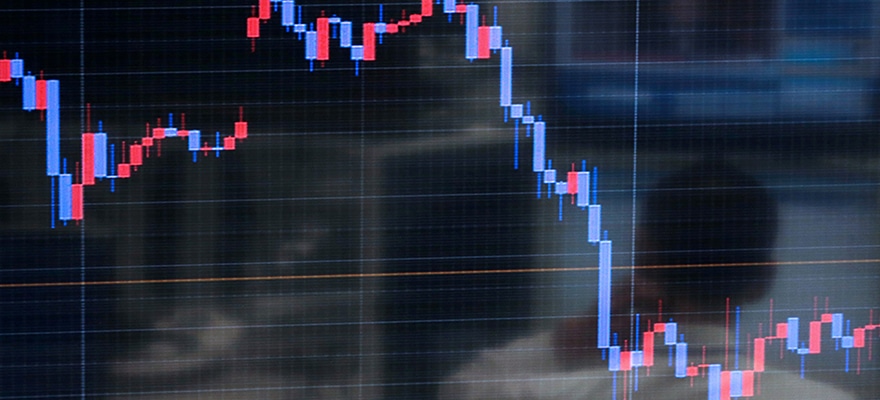Trader and author Raghee Horner talks about money management.
A trader asked her the question regarding this, - and this is a very important one - since a) a lot of traders don’t implement strong money management, and b) there is a lot of discussion on internet forums regarding the best approach, and a person can get overwhelmed with such information.
So the questioner asked, “Could you give me your comments and suggestion on Risk Management . What is your position on the rule that many traders have, that at one given point you should not risk more than 1-2% of your total account value…?”
A very interesting question, and one which a lot of traders, (especially new ones), often ignore. I think it’s because every new trader just wants to get into the meat, you know, trade the actual trade, buy the EUR/USD, see what happens, and make some pips. It’s (usually) only until their account balance accelerates south does it hit home that they shouldn’t have tried to “double up”! Even then it might not hit!
Anyway, Raghee responds: “To 2% or not to 2%. This is a great question. One that I think a lot of traders have. I think risk management is more of a psychological issue. I think that following a stop loss has everything to do with discipline and little to nothing to do with a percentage or number of pips. Based on my opinion, most traders do not follow their “formula” based stop losses because they frankly don’t mean anything. it’s easy to move the placement or ignore it when there is not meaning attached to why the stop loss was placed at a particular price point. Using a 30 pips based stop? Why not 35? It’s just too easy to move when they are arbitrary or based on a number or percent. This is taken from years and years of self observation and teaching hundreds of students up close…”
I mainly agree with this. What Raghee mentions about using a fixed number of pips as a stop loss is totally correct. If you look around on internet forums, a lot of “systems” will say, “use a 50 pip stop”. Ok, but this means you are restricting EVERY trade to a potential 50pip loss. It’s impossible that 50pips would be the correct stop loss for EVERY trade. On some trades you might need some more room for the trade to breathe, and hence increase the stop loss. On other trades you might be able to trade with a tighter stop, thereby increasing your reward to risk factor (depending on profit target of course). There are a whole host of factors that can change your stop loss. Forex is a dynamic market, and being so rigid in this market is going to make your potential success a whole lot more arduous.
Raghee continues, “I also don’t like the idea because it somehow insinuates that trading is like gambling or craps…which in some ways I acknowledge it is…but I believe there is less left to change when trading. Friends of mine who are great traders and gamblers succeed because of discipline and knowing when to vary their bet size. That’s not luck or a formula, that comes from identifying when the momentum is on your side!”
To continue reading the rest of the article, click on the link below:
https://www.ibfx.com/Corporate/post/2010/03/04/Q-A-with-Raghee.aspx
Trader and author Raghee Horner talks about money management. A trader asked her the question regarding this, since a) a lot of traders don’t implement strong money management, and b) there is a lot of discussion on internet forums regarding the best approach, and a person can get overwhelmed with such information. So the questioner asked, “Could you give me your comments and suggestion on risk management. What is your position on the rule that many traders have, that at one given point you should not risk more than 1-2% of your total account value…?” A very interesting question, and one which a lot of traders, (especially new ones), often ignore. I think it’s because every new trader just wants to get into the meat, you know, trade the actual trade, buy the EUR/USD, see what happens, and make some pips. It’s (usually) only until their account balance accelerates south does it hit home that they shouldn’t have tried to “double up”! Even then it might not hit! Anyway, Raghee responds: “To 2% or not to 2%. This is a great question. One that I think a lot of traders have. I think risk management is more of a psychological issue. I think that following a stop loss has everything to do with discipline and little to nothing to do with a percentage or number of pips. Based on my opinion, most traders do not follow their “formula” based stop losses because they frankly don’t mean anything. it’s easy to move the placement or ignore it when there is not meaning attached to why the stop loss was placed at a particular price point. Using a 30 pips based stop? Why not 35? It’s just too easy to move when they are arbitrary or based on a number or percent. This is taken from years and years of self observation and teaching hundreds of students up close…” I mainly agree with this. What Raghee mentions about using a fixed number of pips as a stop loss is totally correct. If you look around on internet forums, a lot of “systems” will say, “use a 50 pip stop”. Ok, but this means you are restricting EVERY trade to a potential 50pip loss. It’s impossible that 50pips would be the correct stop loss for EVERY trade. On some trades you might need some more room for the trade to breathe, and hence increase the stop loss. On other trades you might be able to trade with a tighter stop, thereby increasing your reward to risk factor (depending on profit target of course). There are a whole host of factors that can change your stop loss. Forex is a dynamic market, and being so rigid in this market is going to make your potential success a whole lat more arduous. Raghee continues, “I also don’t like the idea because it somehow insinuates that trading is like gambling or craps…which in some ways I acknowledge it is…but I believe there is less left to change when trading. Friends of mine who are great traders and gamblers succeed because of discipline and knowing when to vary their bet size. That’s not luck or a formula, that comes from identifying when the momentum is on your side!”




















